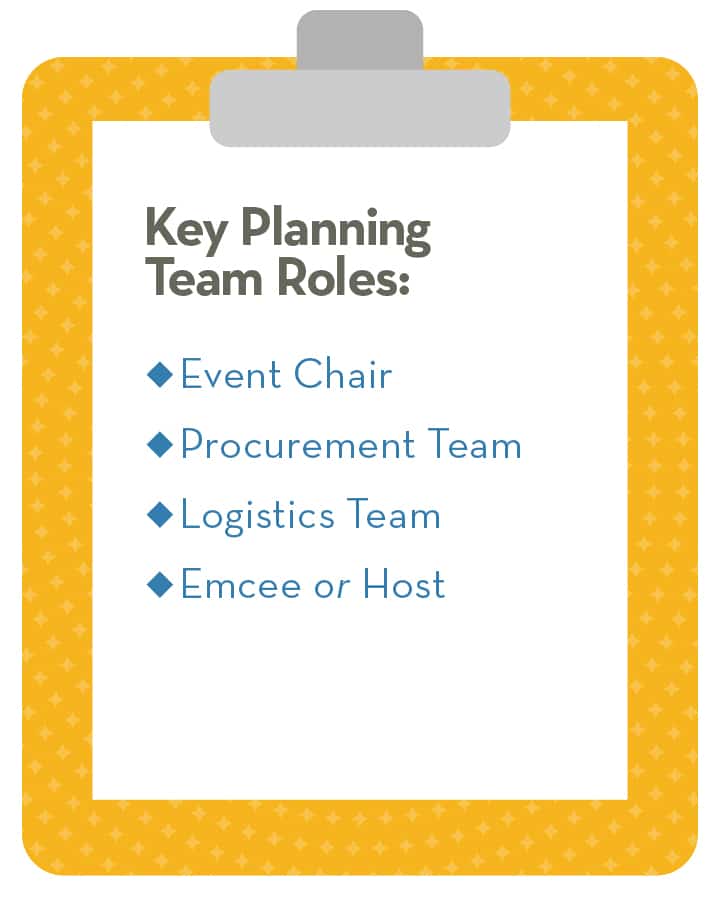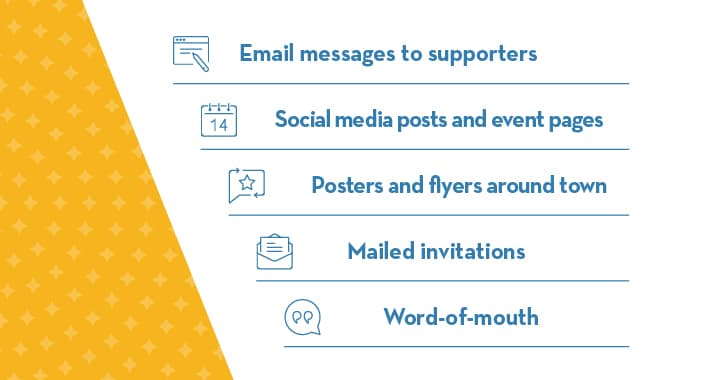What’s a Chinese Auction? Overview & Modern Alternatives
Whether you call it a Chinese auction or another term (more on that later), you’ve almost certainly heard of these fundraising activities. They’re a long-time staple of the fundraising world, and for good reason. They work!
Chinese auctions (or other modern and more inclusive terms) are popular with organizations and donors alike because they’re fun and they generate revenue. They offer the experience of a classic charity auction in a more casual format.
Plus, they typically don’t require the same investment of time and planning resources as auction-style events.
It could be the perfect fundraising strategy for your organization, community group, school, or church. If you’ve never hosted one before, though, you’ll need to know best practices to get started.
Let’s walk through the history behind the fundraising term, more modern terms to utilize this fundraising activity, and how they work, all while staying socially aware.
What’s a Chinese Auction?
Think of these auctions as events that combine a silent auction with a raffle. To put it simply, bidders buy tickets and use them to bid on items. The more you want something, the more tickets you buy and put into the jar to increase your chance of being drawn as the lucky winner.
The History of the Fundraising Term
Let’s take a step back and analyze the origins of the term “Chinese auction” and ideas for alternate terms to use today.
Origins of the Phrase
“Chinese auctions” became popular during the late 1800s when Chinese immigrants came to the United States facing discrimination, low wages, and lack of legal protections.
In American slang during this time, “Chinese” began to be associated with cheapness. Many believe this is the origin of “Chinese auction,” as a name for raffle-style fundraising events with inexpensive tickets and prizes.
In today’s modern fundraising world, many nonprofits are searching for new terms, so they can jettison their event from the racially loaded use of “Chinese” as a slang word for “cheap.”
What This Means Today
Especially today, amid increased calls for racial inclusion and equity in our institutions, organizations, and public forums (as well as the COVID-19 pandemic’s impacts on Asian-American communities), “Chinese auction” is an outdated term that many nonprofits are looking to replace.
We put together a few alternate terms that you can use in place of Chinese auctions.
Modern Alternatives to “Chinese Auction”
Knowing the history of the term, alternate names have been created in place of “Chinese auction.”
These names include:
- Penny Socials (this is the most popular)
- Tricky Trays
- Pick-a-Prize
- Lucky Number Dinners
- Chance Auctions
All of these phrases are used for raffle-style fundraising events and run essentially the same as the outdated term “Chinese auctions.”
“Penny social” is the most popular and widely-recognized alternate name for “Chinese auctions.” You can learn more about penny socials and how to get started planning one with our complete guide.
It’s important to continue to grow and acknowledge the importance of social awareness and responsiveness in our society today. Especially for nonprofits wanting to continue growing their audiences in 2020 and beyond!
Now that we’ve covered the history and context of the phrase, let’s move on to explain how penny socials work.
How Do They Work?
There are 6 main steps to a penny social/tricky tray/chance auction:
- Participants buy their tickets (or raffle tickets). Using event fundraising software or online auction tools, you can sell virtual tickets – which is especially important in our new COVID-19 reality. Or you can do this the old-fashioned way if that’s easier for your organization.
- Guests explore your item display, as they would at a silent auction. Many organizations create raffle baskets or other creative basket ideas to attract more bids!
- To place bids, guests leave tickets in the baskets placed in front of their favorite items.
- Typically, there are no rules about how many tickets can be placed in a single basket or bowl. Feel free to make your own rules depending on the specifics of your event.
- Once everyone’s “spent” all their tickets, the event emcee will pull a random ticket from each basket and announce the lucky winners.
- Winning guests can either collect their prizes right away or later, depending on what other activities are going on at your event.
Are they effective fundraising events?
In short, yes! Penny socials are relatively easy-to-plan fundraising events, making the auction experience more doable for smaller organizations and groups.
They’re extremely engaging for guests who will love exploring the prizes while socializing in a casual environment.
Penny socials are also very easy to adapt with additional fundraising ideas and themes. For example, a penny social can be its own stand-a-lone event or part of a larger themed dinner. Plus, you have complete flexibility over what items you’ll offer and how you’ll price the raffle tickets.
Who hosts penny socials?
Organizations of all shapes and sizes host penny socials and raffle-style events. These often include:
- Nonprofits
- Schools
- Community groups
- Churches or youth groups
Penny socials are great fundraising events for smaller, tight-knit groups or for cases when you need a quick and easy fundraising idea.
Larger organizations can definitely succeed with penny socials, but the logistics will likely be more complicated. Charity auctions often provide a higher return on investment for large nonprofits than more casual events.
How to plan a penny social
Let’s walk through the main steps of getting your penny social off-the-ground and ready by event night.
Set a goal and budget.
Start by setting a fundraising goal for your penny social. How much do you want or need to raise with this event?
Next, outline a budget. This will likely need to include event planning tools, virtual or venue costs, supplies (including tickets), and food and drink.
Procure your prize items from community donors, business, key supporters. If you need you can spend money to purchase higher end of hard to get items, as well.
Setting guidelines now will help keep your planning process on track.
Organize a planning team.
The size of your team will depend on the size of your organization, but it’s important to assign responsibilities early. You’ll need these key players:
- Event chair – the leader of the planning team who’ll keep things on track.
- Procurement team – one or more people to solicit prize items from donors and businesses.
- Logistics team – one or more people to handle the venue, invites, promotions, etc.
- Emcee or host – someone to host the event and make sure guests follow the rules.
Pick a theme.
What will be the theme of your event? Penny socials typically have creative themes to keep guests entertained and engaged all night. Some top theme ideas include:
- Hawaiian Luau or Day at the Beach
- Decade Nostalgia, like the 60s, 70s, or 80s
- Winter Wonderland, perfect around the holidays
- A Night in Paris
- March Madness or Football Season Kickoff Party
- Chef’s Table, all about cooking and gourmet food
Keep in mind, a theme can be adapted whether it’s virtual or in-person and increase excitement on event night.
FUNDRAISING TIP: Now’s also the time to set a date. Narrow it down based on holidays and your organization’s own calendar. Try to avoid dates and times when your core audience will be busy with work, travel, or other events.
Once you’ve set a date, outline a timeframe for your planning team. Using event fundraising software can seriously streamline this process.
Procure your prize items
Remember, the items you offer at the penny socials are ultimately what will make it a success! Here are a few of our favorites:
- Technology. Try to procure a top-of-the-line smartphone, laptop, smartwatch, camera, or tablet from a generous local retailer, or see if a donor will cover the cost.
- Food and drink packages. A local restaurant might donate a gift certificate and reservation, or you can build a package of wine and gourmet food products.
- Lessons or personal training. Talk to local trainers about donating their services or see if a local pro will spend an afternoon sharing pointers. Golf lessons are a great example.
- Experiences. Get creative and offer prizes with unique experiences attached, like food tastings, circus outings, hot air balloon rides, or anything else your audience would enjoy.
Try to procure one or more big-ticket items from local businesses, like tickets to an event or new tech, plus plenty of smaller items or packages.
Give yourself plenty of time to find the right items and think about what types of prizes would most interest your audience. For example, a high school’s event should feature very different items than at a nonprofit’s event for older donors.
Get the word out.
Now it’s time to start promoting. Build some hype by spreading the word through every possible communication channel. These could include:
Promotion is easy with fundraising technology—all you have to do is share your auction link on social media, email, or however you choose to communicate with your donors.
Sell tickets.
If you’ve chosen to sell tickets online, you’ve already got a head start on this step. You can even open up pre-bidding with the right auction and online ticketing tools!
If you prefer to handle tickets the old-fashioned way, just make sure to stay organized and plan ahead to prevent any logistical confusion later.
Make sure that guests can buy their tickets or tokens both before and during the event. If you choose to sell tickets at the event, be sure you have point of sale ticketing tools to make the purchasing, tracking, and collecting easy for your team and volunteers.
Host your penny social.
Finally, it’s time for the main event itself! Give your team plenty of time to set up the venue or virtual platform and prepare other elements of the event.
Penny socials themselves typically last about 2 hours.
When setting up your prize items, think about traffic flow. Make sure guests won’t get jammed up around U-shaped setups or overcrowded displays with too much to look at.
Clearly label everything and make sure each item has its own basket or bowl to collect tickets. Designate an area for guests to check-in and purchase additional tickets and a booth for guests to check out and collect their items.
Congrats! You’ve successfully made it through your fundraising event while shifting to a more socially aware term. Kudos to you!
Wrapping Up
Penny socials only scratch the tip of the iceberg for your year-round fundraising strategy. Check out these other resources to keep pushing your mission forward:
- Charity Auction Software: The Buyer’s Guide [Updated] – Trying to decide fundraising software can feel overwhelming. Make it easy with this buyer’s guide.
- 45+ Free & Virtual-Friendly Silent Auction Item Ideas – You have an auction, and we have 45+ silent auction item ideas for you! Dive into this resource for your pick of your favorite auction items.
- Top 16 Silent Auction Software for Live and Virtual Events – Supercharge your silent auction with software to power your mission. Check out our top 16 list.



